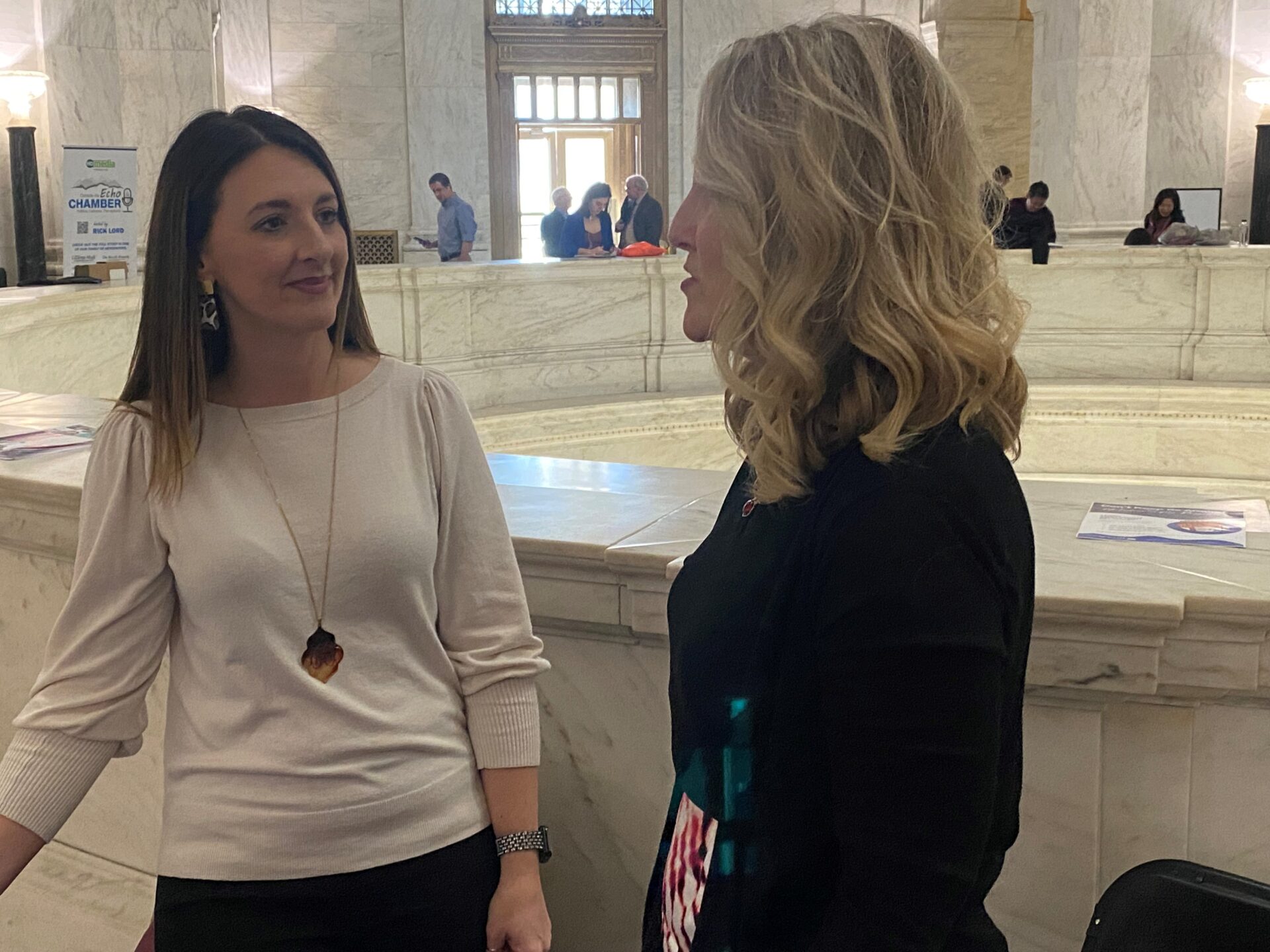Tuesday was Recovery Advocacy Day at the West Virginia Legislature. The capitol rotunda was filled with smiling faces, clear heads and hopeful hearts. The goal was to identify areas related to treatment, prevention and recovery efforts and lobby for impacting legislation.
Deb Harris explained the “what and how” of her addiction.
“Mostly pain pills and alcohol. But I did it all,” Haris said. “It started out as recreational use and fun, some rebellion at a young age and it just escalated and before I knew it I was too far in.”
Now 14 years sober and in continuing recovery, the Charleston wife and mother of four hit her so-called “rock bottom” when her life as a mother was jeopardized.
“I had actually gotten my kids taken away and gotten them back and realized that I had no idea how to live or raise a family, so I had a relapse,” Harris said. “I had a return to using and I woke up one morning, three months after that and asked God for help and have been clean ever since.”
Harris said she was rescued both by God, and one of the hundreds of West Virginia recovery facilities, many on display in the capitol.
Joe Deegan is the public policy chair with the West Virginia Association of Addition and Prevention Professionals. He said he was there in support of legislation like the patient brokering act that cuts down on unscrupulous treatment center “middlemen” who seek profit over providing help. He said he was also anxious to see results from the study authorized for a statewide count and analysis of West Virginia’s homeless population.
“We need to really study what the homelessness problem is in the state,” Deegan said. “Several counties, Wood, Cabell and Mingo, are really anxious about proliferation of beds in their communities, and then, they have some homelessness. So, we really need to get in the weeds and say what’s really causing that.”
What really helps short term recovery become long term sobriety? Experts like Joe Deegan sais you don’t leave your final treatment stay or stint without a detailed plan.
“When you finish, you have to have a plan, you have to have a follow through. If you have a plan for up to a year, there’s a high end for people that stay in recovery,’ Deegan said. “If they even get five years, it’s almost like you never had the addiction, because you end up in a way of life that you enjoy. You will want to do it. It’s not like you’ve got to do it, you’ll want to.”
Harris and so many others here said more people should understand that drug addiction and alcoholism are not conditions, they are certified diseases, medical illnesses.
“Substance Use Disorder is the disease that doesn’t make a person a bad person, they are sick,” Harris said. “Don’t look down on someone because of their illness, because they’re sick. Offer them hope, offer them love, offer them support. Let them know that you care about them.”
Harris and Deegan said West Virginia is one of few states seeing a decline in overdose deaths, countering those diminishing fatalities with new sober lives, all remaining in recovery.
